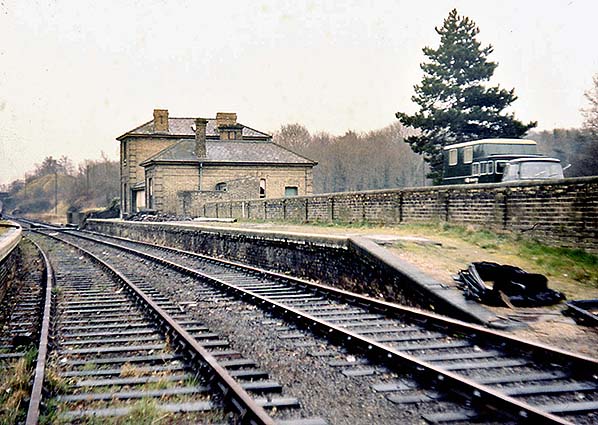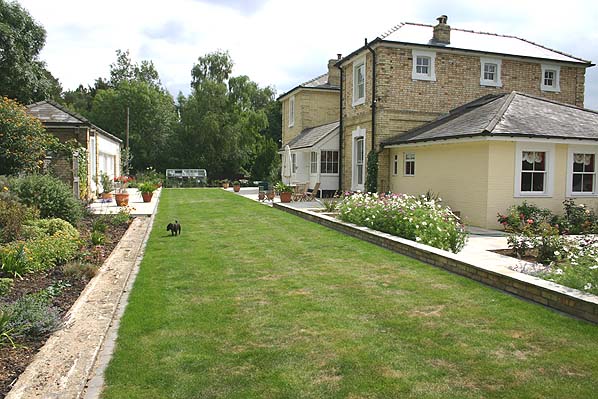
Station Name: BARTLOW (Stour Valley Line)[Source:
Nick Catford]
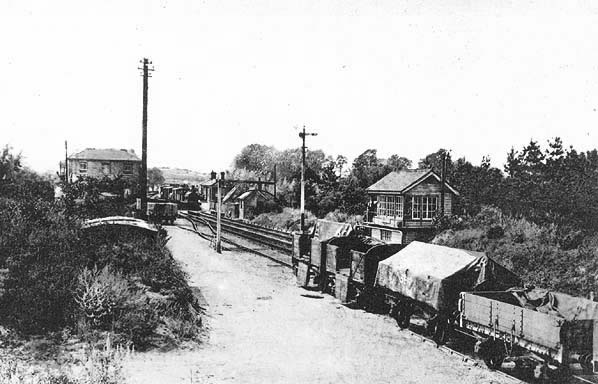 Looking east towards Bartlow station from Bartlow junction before 1914
Copyright photo from John Alsop collection 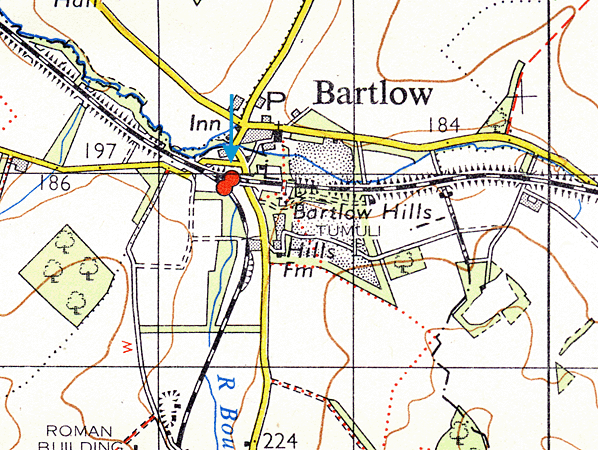 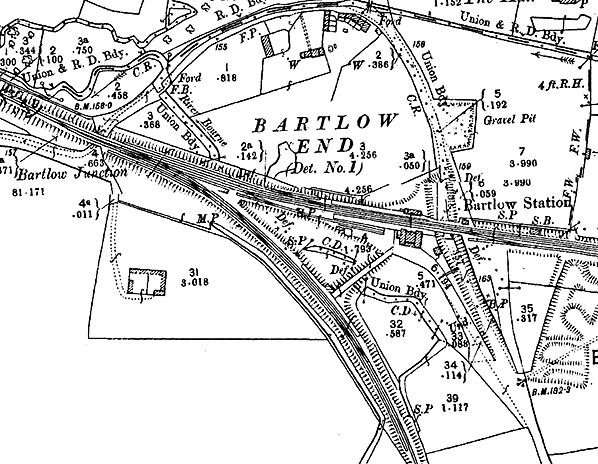
1903 1:2,500 OS map The Stour Valley line station is seen centre right. In front of the main station building a footpath leads to the Saffron Walden branch platform. The small branch waiting shelter is seen at the end of the footpath. Two signal boxes are shown, one to the west of Bartlow Junction on the far left, the other on the Stour Valley line to the east of the road bridge.
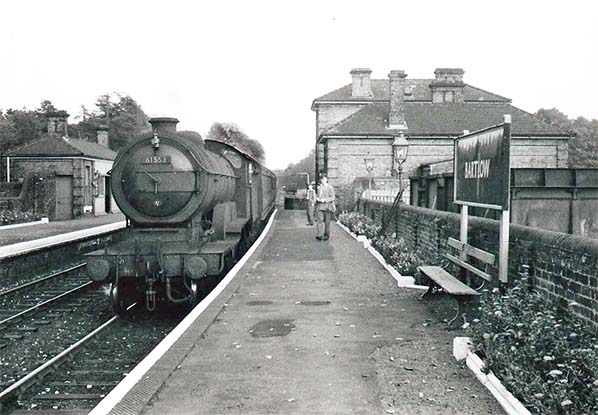
Class B12 4-6-0 No.61553 arrives at Bartlow with a Cambridge-bound Stour Valley local service in October 1956. This was typical of the work undertaken by the B12 class in their final years, having been ousted from main line express duties as train weights increased. This particular locomotive is something of a mystery as her allocation history differs according to source. She appears to be carrying a 31A (Cambridge) shedplate above but was supposedly not allocated to 31A until early in 1957. Built by William Beardmore & Co. in 1920, she was one of the class given ACFI equipment in the 1930s. Withdrawal came in August 1958. Note the leaves on the platform; it must have been a blustery autumn day at Bartlow when the photograph was taken. Despite being a junction station, Bartlow was said to jostle with Pampisford for the title of the least used station in respect of ticket sales on the Stour Valley Line. Unlike on many branch lines, the vast majority of Stour Valley Line stations were conveniently sited. A pair of coal wagons sit in the dock on the right. Note the rather gargantuan running-in board. There were two such boards and at least one is thought to have once exclaimed 'Change here for Saffron Walden Trains' but no photographic evidence of this has so far come to light. These boards were in two parts, 'Bart' and 'low', and the 'Bar' half of one of them ended up covering a drain (or an inspection chamber for same) behind Cambridge North signal box.
Photo by Peter Jamieson 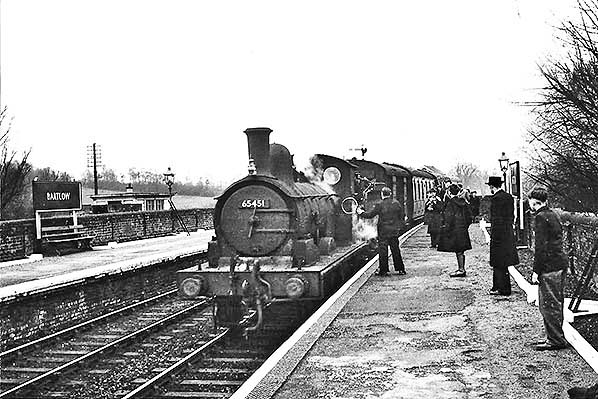 In March 1958, Class J15 0-6-0 No.65451 arrives at Bartlow from Cambridge with a train comprising a van and three passenger coaches. The van appears to be a 'Fruit D'. The locomotive is not one of those fitted with a tender cab but could be heading for the Colne Valley Line. This particular detail is not recorded, however. Note the neatly kept flower beds; in those days the white bordering would have been more for aesthetics than for any health and safety, to use a modern term then unheard of, considerations. The Saffron Walden platform is out of view to the left but Bartlow Junction signal box, or rather its roof, can just be seen above the train. Elsewhere in the 'Disused Stations' website and in particular the page covering Worlington Golf Links Halt, mention was made of the 'pouch and loop' type single line tokens damaging the sides of DMU cars. On the platform at Bartlow, a token exchange using these 'pouch and loop' devices can be seen. No.65451 was a long-time Cambridge resident and she survived until September 1959. By the 1950s the J15 class was beginning to look a little antiquated, perhaps more so than the E4 class, but they were simple, rugged and reliable little machines which could show a surprising turn of speed when required to do so.
Photo by Peter Jamieson 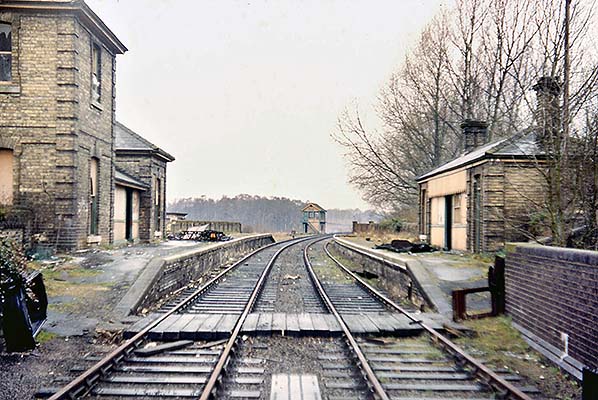
 Home
Page Home
Page
|

